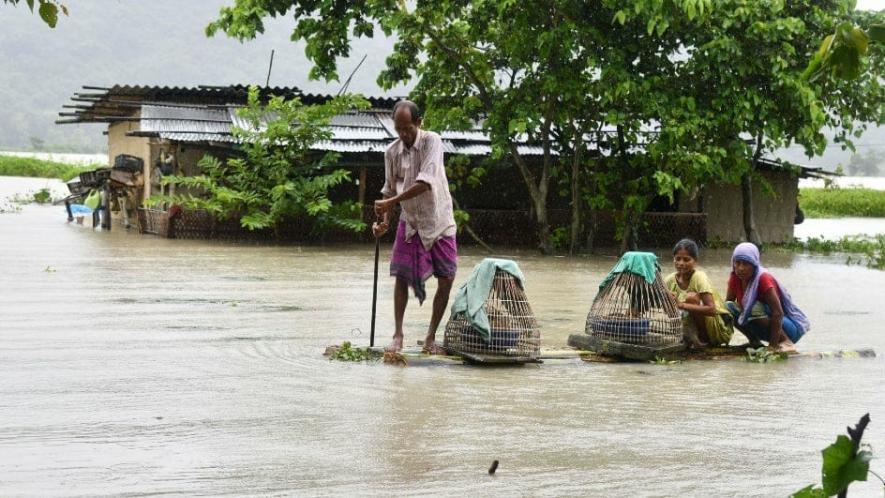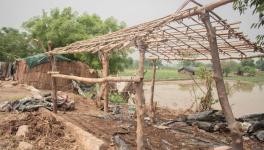Experts Call for More Early Warning Systems To Mitigate Monsoon Floods in Hindu Kush Region

Patna/Kathmandu: Amid the monsoon in Hindu Kush Himalayan (HKH) region, experts have warned of the increasing risk of floods and urged the countries in the region to install more early warning systems and forecast information on time to reduce risks. HKH region's countries, including Nepal, Bangladesh, China, India, Myanmar and Pakistan, have been facing the consequences of floods for years.
"The impact of monsoons is increasingly devastating each year, and countries in the region continue to grapple with the challenges. The World Bank projects that the GDP/capita change due to climate change will be greater than the global average of approximately 7% for South Asian countries," experts of the Kathmandu-based International Centre for Integrated Mountain Development (ICIMOD) said.
Scientists at ICIMOD said climate change has led to alarming changes in rainfall patterns, intensifying the frequency and magnitude of precipitation. As a result, heavy rainfall within short durations has become more common in the HKH, posing severe flood risks.
ICIMOD's scientist Manish Shrestha, who has been working on the rising flood risks and necessary actions to mitigate them, said the 2023 monsoon is projected to be average, even below average.
"For disaster events, however, this does not translate to a reduced risk of floods. A single heavy spell of rain can trigger disastrous consequences. We saw two such incidences just over the weekend, in Nepal's eastern Koshi province, where an overnight rainfall triggered flooding and landslides leading to five deaths and 28 missing people, and a flash flood in Sikkim, northeastern India, washed away bridges and major highways displacing local communities and thousands of tourists. "
Another ICIMOD expert Pradeep Dangol said that June to September (four months) are crucial for the HKH, with the monsoon rains accounting for 80% of the region's annual precipitation.
"The increasing unpredictability of the season, however, is causing chains of disastrous events, leaving countries in the region struggling to adapt and respond. We have had several recent incidences where a single event has triggered disastrous impacts – the 2022 Pakistan floods, which led to 1730 deaths and economic losses tallying over USD 15 billion."
Both pointed out that the monsoon projection for 2023 is strikingly similar to that for 2014, where experts projected an average to below-average monsoon across South Asia. The year proved disastrous for Nepal, where heavy rainfall from August 14-16 caused massive flooding and landslides in 18 districts, leading to 53 deaths, countless displacements, and economic losses of USD 140 million.
"All of us would want 2023 to be strikingly different from 2014 in terms of preparedness. We know that early warning and information are key to reducing risks. While short-term local events, particularly flash floods, are challenging to predict, community-based flood early warning systems provide a couple of hours lead time, and the Flash Flood Prediction Tool provides 54 hours' lead time," Dangol said.
In recent years, ICIMOD has partnered with national and local entities to improve forecast and early warning systems in the region.
"Community-based flood early warning systems give communities a lead time of a couple of hours to make critical life-saving decisions. With our support, partners have installed three stations in Afghanistan, seven in India, 11 in Nepal, and five in Pakistan," said the latest release of ICIMOD.
According to ICIMOD, several other development actors are also involved in installing community-based flood early warning systems in the region.
"More such early warning systems must be installed in major flood-prone tributaries. For maximum impact, scaling of these efforts is necessary. The region must make significant national-level investments in forecasting and early warning systems."
While information is crucial, communities must thoroughly assess their environment and take proactive measures. This includes identifying safer zones, ensuring access to emergency food supplies, and maintaining constant communication with local leaders.
"Our work complements the work of meteorology and hydrology agencies in the HKH regional countries, who compile and share critical impending disaster warnings as text messages to local leaders in vulnerable communities," said ICIMOD.
Get the latest reports & analysis with people's perspective on Protests, movements & deep analytical videos, discussions of the current affairs in your Telegram app. Subscribe to NewsClick's Telegram channel & get Real-Time updates on stories, as they get published on our website.
























